You don’t have to be gluten-free to enjoy these tender, melt-in-your-mouth coconut flour pancakes. But there are some tricks to making them over-the-top delicious.
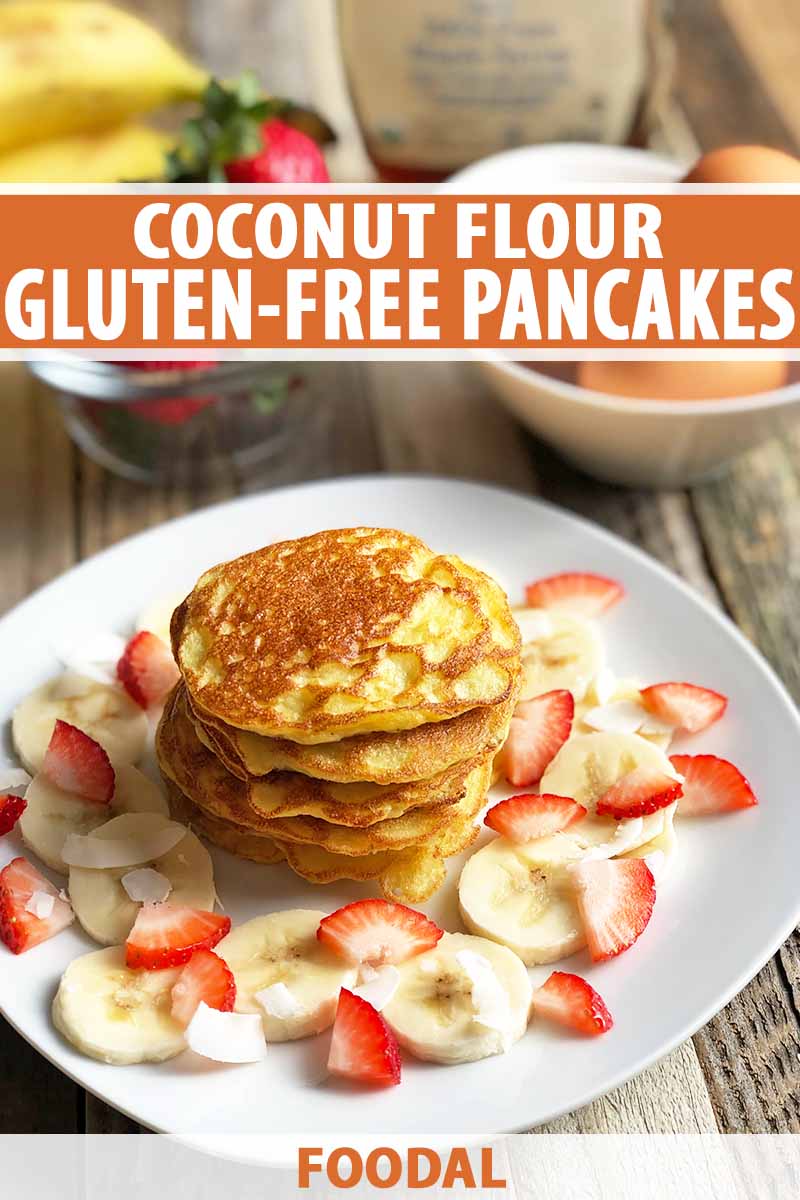
I love pancakes. I especially enjoy making huge, dinner-plate-sized ones, either studded with cinnamon and chocolate chips, or mixed with fresh fruit and drizzled with pure maple syrup.
So the first time I tried making coconut flour pancakes, I was beyond frustrated.
Look, I’ve tried my hand at other alternative flours. The results were delicious! My einkorn rye chocolate pancakes were beyond amazing, and my whole wheat pancakes I made last weekend were a big hit.
But this coconut flour version stumped me. But only at first.
If this is your first time making pancakes with this alternative gluten-free flour, then let me tell you: this process is not going to be exactly the same as what you’re probably used to, if you want the best results.
Based on what I’ve learned from numerous failed attempts, here are the 5 most important tips for success when making coconut flour pancakes at home:
- Do NOT substitute another type of flour – it won’t work.
- Preheat the skillet or griddle only after your batter is made.
- Don’t over-grease the pan.
- Make them small, otherwise they won’t flip.
- Use a thin spatula for flipping.
Let’s break each of these recommendations down a bit more…
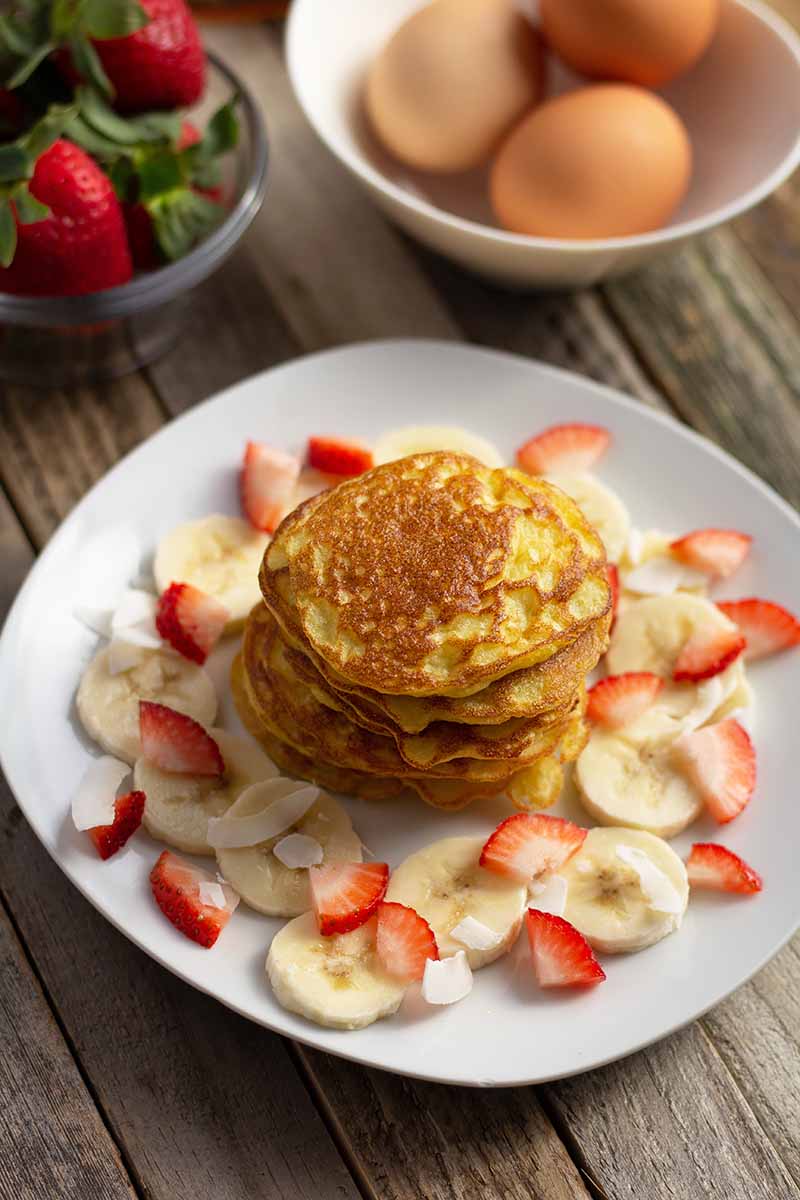
To start, I’m here to help you to understand the answer to two important questions:
What is coconut flour? And what makes it different?
Coconut flour is made from dried coconut meat. It is naturally gluten free, and can easily be made at home. However, if you want to buy it from the store, you’ll be pleasantly surprised that it’s generally cheaper than other alternative flours.
Nutritionally, it is high in fat and protein, while being low in carbohydrates. As a result, you’ll often see it used in paleo or low-carb recipes.
It’s also a good source of manganese, which is an essential mineral that plays a role in bone and skin health.
When using this particular flour, one of the biggest differences between it and other flours (including gluten-free ones) is that it loves liquid – and I mean loves it.
It is very good at absorbing liquid. As a result, using it can dry out your breakfast treats and baked goods.
In order to keep our pancakes tender and moist rather than dry, you’ll notice we have a lot of liquid ingredients in this recipe in relative proportion to a small amount of flour.
This is the main reason why you can’t substitute other gluten-free flours – the texture of the final product would be totally off.

This brings us to tip #2: wait to preheat your skillet until the batter is made.
While it doesn’t need a ton of time, giving the batter a few minutes to sit before you cook helps allow the coconut flour to absorb some of the liquid, resulting in a thicker batter and fluffier pancakes.
Next up: don’t over-grease your pan.
Since the batter contains a good amount of fat, I’ve never had a problem with it sticking to the pan.
A little butter, coconut oil, or cooking oil spray on the skillet can help these pancakes to brown nicely. But if you grease your pan too much, the batter will spread, creating thinner rounds with a greasy texture.
If I had to rank these, the fourth tip is perhaps the second most important: keep the pancakes small.
Remember how I said I was frustrated the first time I made these? It was because I tried to make them as large as traditional ones. I know I said up above that I have a passion for giant flapjacks, but you’re going to want to stick to something a little more petite with this type.
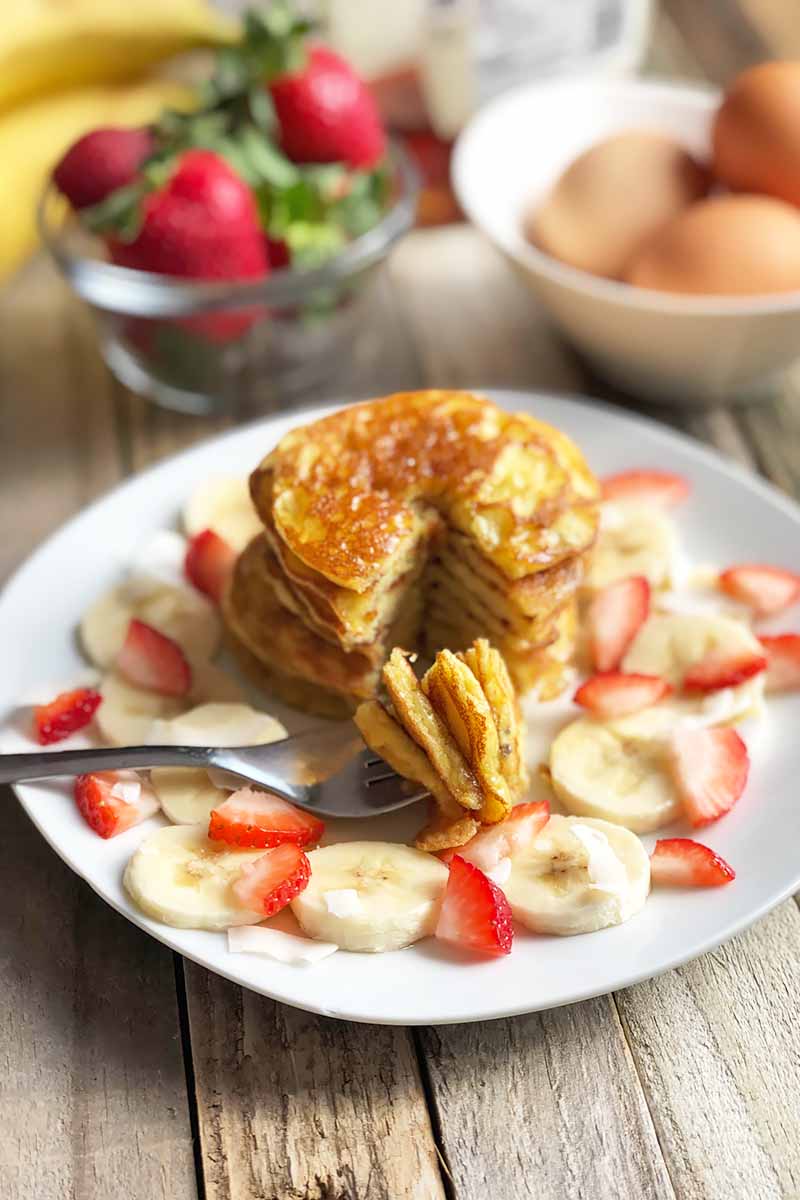
Coconut flour doesn’t contain gluten, so the texture is much more tender and delicate than those made with wheat flour. If you try to make large or even what some might call “normal-sized” pancakes, when you go to flip them, they will completely fall apart.
While I’ve had limited success using 2 or 3 tablespoons of batter per round, I’ve had the most consistent results by using just 1 tablespoon of batter each.
I know, that’s teeny-tiny. But do you remember loving those cute silver dollar pancakes when you were a kid? Trust me when I say that it’s time to embrace the idea of this miniature breakfast. It’ll save you a lot of frustration and heartbreak, plus they’re cute and delicious, and you can eat a whole bunch of them.
You’re welcome!
On to the final tip: use a thin spatula.
These are very delicate, and I’ve found that a thinner spatula is less likely to result in breakage when you go to flip them. A thin, flexible spatula is your best friend here.
If you only have a traditionally proportioned flipping utensil, then I recommend using a rubber or silicone spatula instead. Gently ease each mini flapjack onto the spatula before flipping.
Something like a fish spatula will also work nicely, just remember to be gentle on your frying pan or griddle surface, to avoid scratching.
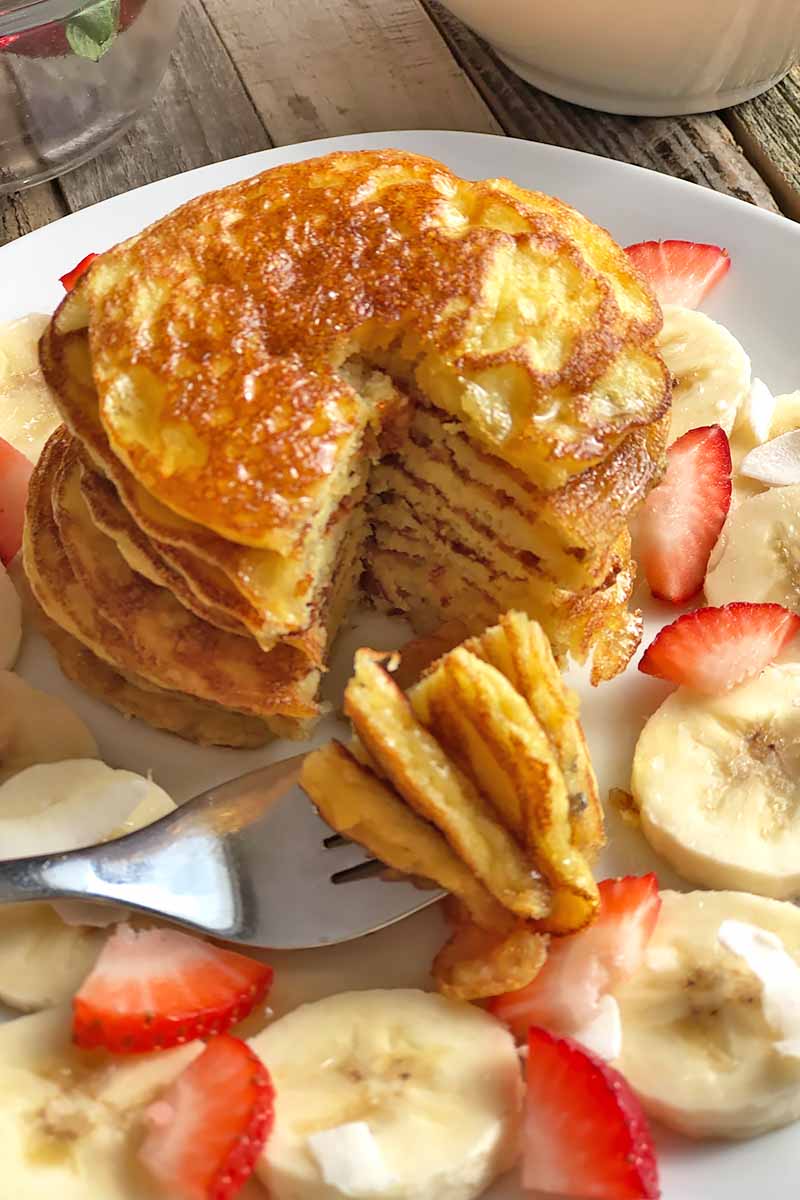
Now that you have your plate of adorable, melt-in-your-mouth gluten-free pancakes, it’s time for the fun part: toppings!
Even though these don’t have a strong coconut flavor, I thought it just felt right to go all-in on the tropical theme with banana slices, diced strawberries, and coconut flakes.
Whatever toppings you choose, I know you’re going to love breaking out of your breakfast comfort zone with a (mini) stack of these flapjacks!
Print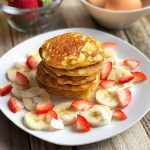
Coconut Flour Pancakes
- Total Time: 20 minutes
- Yield: 4 servings; approximately 20 mini pancakes 1x
Description
You don’t have to be gluten-free to enjoy these tender, melt-in-your-mouth coconut flour pancakes.
Ingredients
- 3 large eggs
- 3 tablespoons melted coconut oil or unsalted butter, cooled slightly
- 2 tablespoons milk
- 1 1/2 teaspoons honey or maple syrup
- 1/4 teaspoon salt
- 3 tablespoons coconut flour
- 1/2 teaspoon baking powder
Instructions
- In a medium-sized mixing bowl, whisk eggs until just slightly frothy. Add melted coconut oil, milk, and honey, and whisk until well combined.
- Add coconut flour, salt, and baking powder to liquid ingredients and stir until just combined. Set aside.
- Heat a large skillet over a medium flame, or heat griddle to 325oF.
- Once heated, lightly grease pan with extra coconut oil, butter, or cooking oil spray.
- Drop 1 tablespoon of batter per pancake onto pan. Cook for 1 minute, or until the tops are bubbling and the bottoms are lightly browned. Flip and cook another 30-60 seconds.
- Transfer to a plate and cover with foil. Repeat with remaining batter.
- Serve with toppings of choice.
- Prep Time: 5 minutes
- Cook Time: 15 minutes
- Category: Pancakes
- Method: Stovetop
- Cuisine: Breakfast
Keywords: pancake, coconut flour, gluten-free
Cooking By the Numbers…
Step 1 – Measure Ingredients and Melt Coconut Oil

Measure out all of your ingredients.
Note: Coconut flour absorbs liquid differently than other flours. Do not substitute in another type of gluten-free or all-purpose flour. For the milk, feel free to use regular cow’s milk, or a plant-based option.
Microwave the coconut oil or butter in 15-second intervals until melted. Set aside and allow to cool slightly.
Step 2 – Whisk Together Wet Ingredients
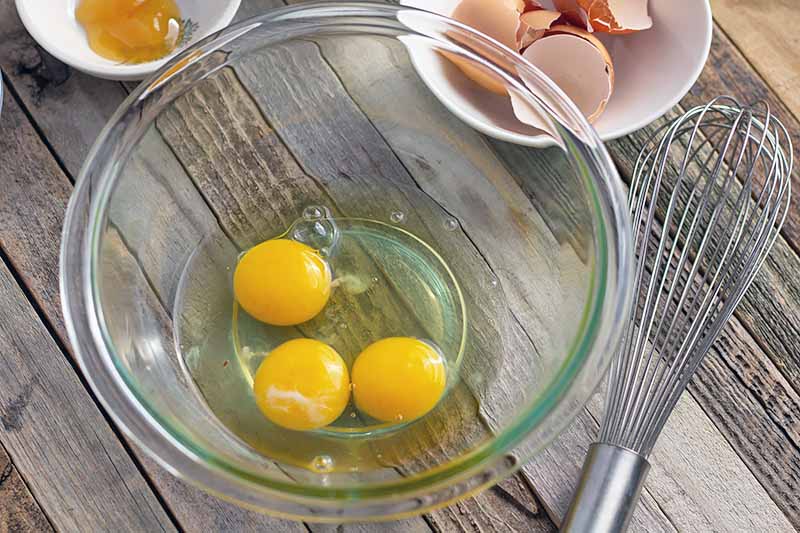
Crack the eggs into a medium-sized mixing bowl and whisk until slightly frothy. Add melted coconut oil, milk, and honey. Stir until just combined.
Step 3 – Add Dry Ingredients

Add the coconut flour, baking powder, and salt to the liquid ingredients, and stir until just combined. Set aside.
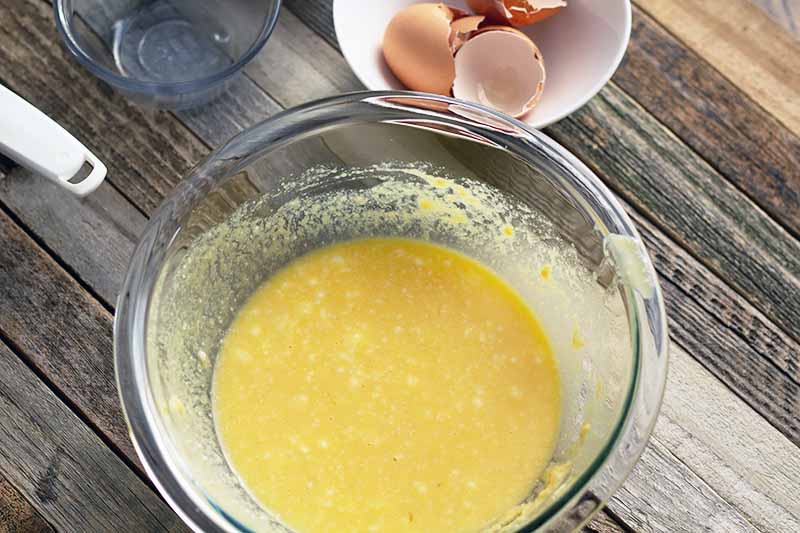
Step 4 – Heat Pan and Cook
Place a large skillet over medium heat. You can also preheat an electric griddle to 325˚F instead.
Once heated, lightly grease the pan or griddle with coconut oil, butter, or cooking spray. Do not grease the pan excessively, or the batter will spread too much, and your finished product will have a greasy texture.
As coconut flour pancakes are very delicate and not easy to flip, I recommend making the mini-sized. To do this, drop 1 tablespoon of batter per round onto your lightly greased pan.
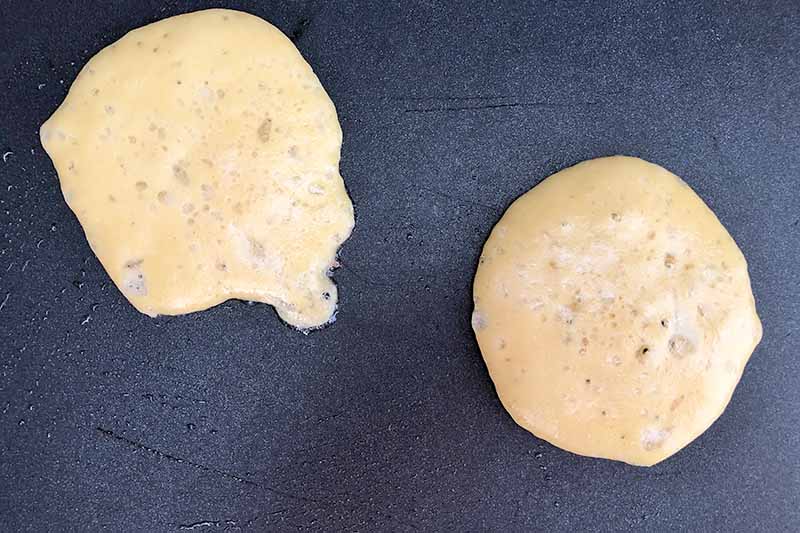
Cook for 1 minute, or until the bottoms of the pancakes are starting to brown, and bubbles are forming on the top.
Flip with a thin spatula and cook for another 30-60 seconds. Remove from heat and repeat with the remaining batter.
To keep them warm until you’re ready to serve, either place on a plate and cover with foil, or place in an oven preheated to 175˚F, or the lowest setting.
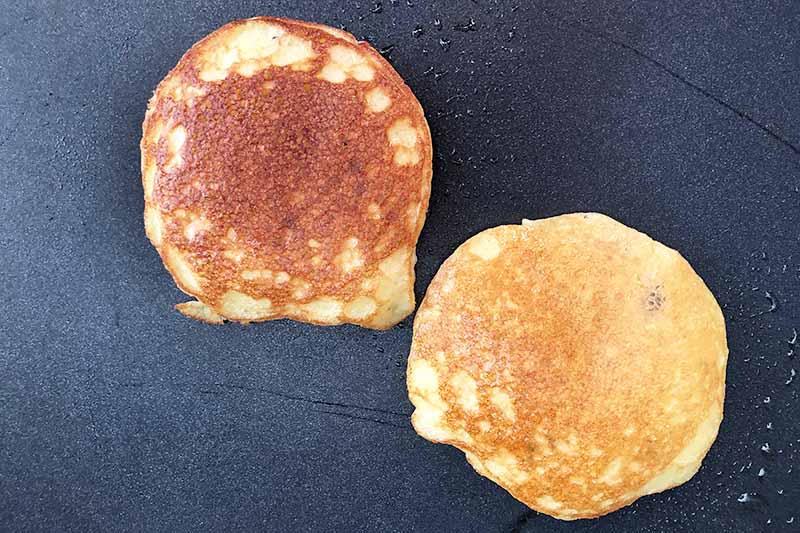
If you want to try making them slightly larger, you can use 2 tablespoons of batter per pancake, but any more batter than that will likely spread too much and break each time when you go to flip it.
Step 5 – Serve and Top
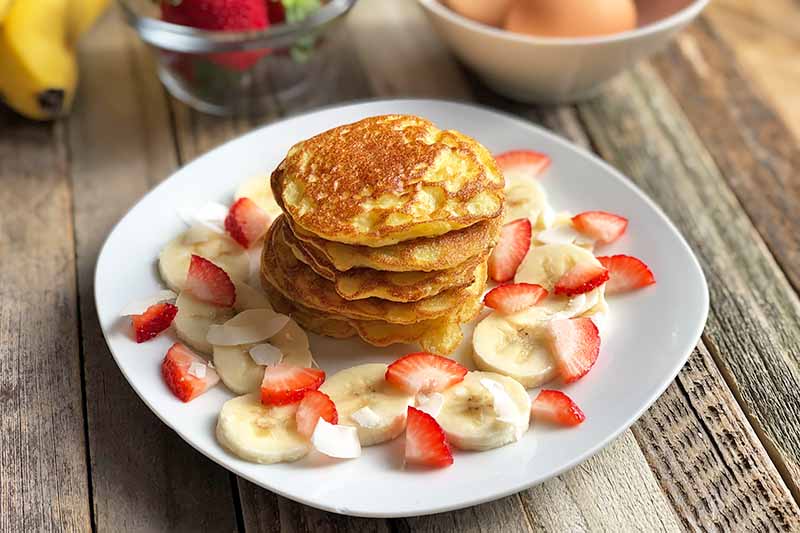
Serve and enjoy! For a tropical feel, I topped mine with banana slices, diced strawberries, coconut flakes, and maple syrup. Though I recently made a batch of strawberry syrup, and that was fantastic drizzled over the top of the pancakes.
Gluten-Free Breakfasts Are Just as Sweet
While gluten-free pancakes and baked goods used to get a bad reputation for being dry, crumbly, and not as satisfying overall as their gluten-containing counterparts, that’s no longer the case.
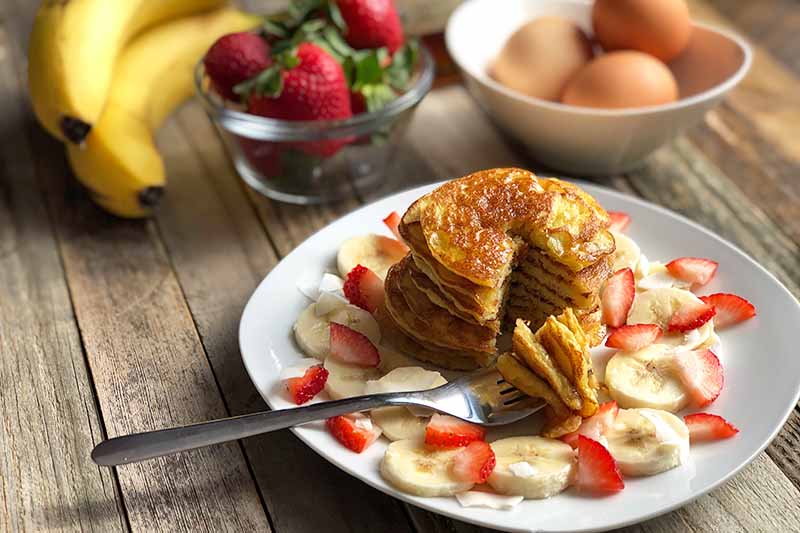
Thanks to the rise in popularity of baking with alternative flours, you can find gluten-free recipe alternatives that are just as satisfying.
To get you started, here are some of our favorite gluten-free recipes to enjoy in the mornings:
Any tips for making pancakes with coconut flour that we missed? Share in the comments below. And after finishing your short stack, make sure to give this recipe a 5-star rating to let others know how much you loved these!
Photos by Kelli McGrane, © Ask the Experts, LLC. ALL RIGHTS RESERVED. See our TOS for more details. Originally published by Shanna Mallon on September 22, 2010. Last updated: May 19, 2023 at 13:51 pm.
Nutritional information derived from a database of known generic and branded foods and ingredients and was not compiled by a registered dietitian or submitted for lab testing. It should be viewed as an approximation.
The written contents of this article have been reviewed and verified by a registered dietitian for informational purposes only. This article should not be construed as personalized or professional medical advice. Foodal and Ask the Experts, LLC assume no liability for the use or misuse of the material presented above. Always consult with a medical professional before changing your diet, or using supplements or manufactured or natural medications.
About Kelli McGrane, MS, RD
Kelli McGrane is a Denver-based registered dietitian with a lifelong love of food. She holds undergraduate and master’s degrees in nutrition science from Boston University. As a registered dietitian, she believes in the importance of food to nourish not only your body, but your soul as well. Nutrition is very personal, and you won’t find any food rules here, other than to simply enjoy what you eat.

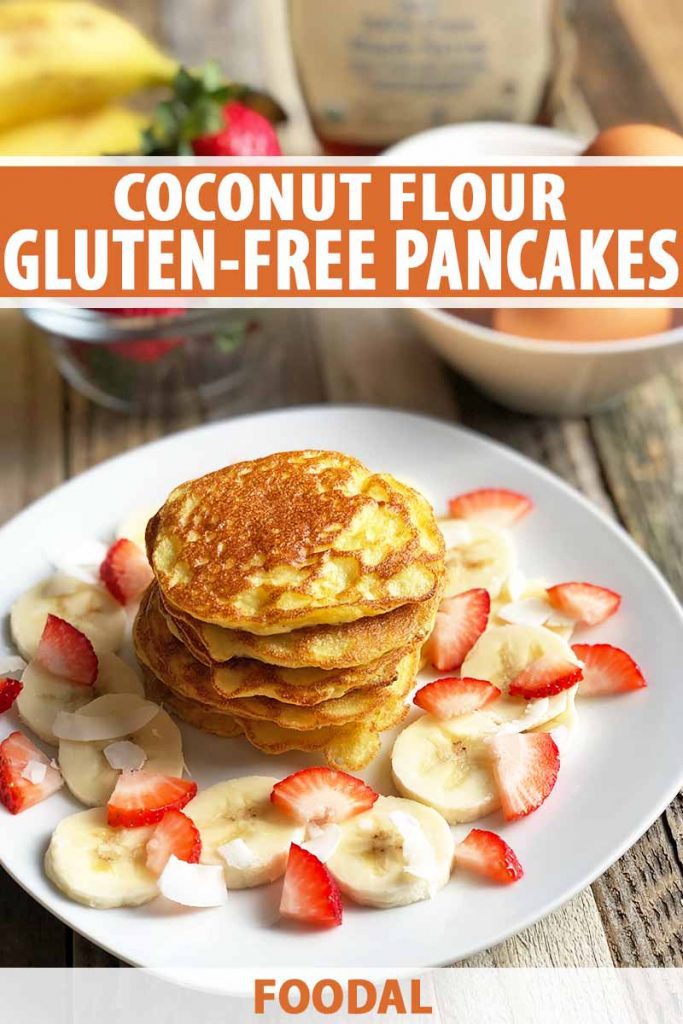
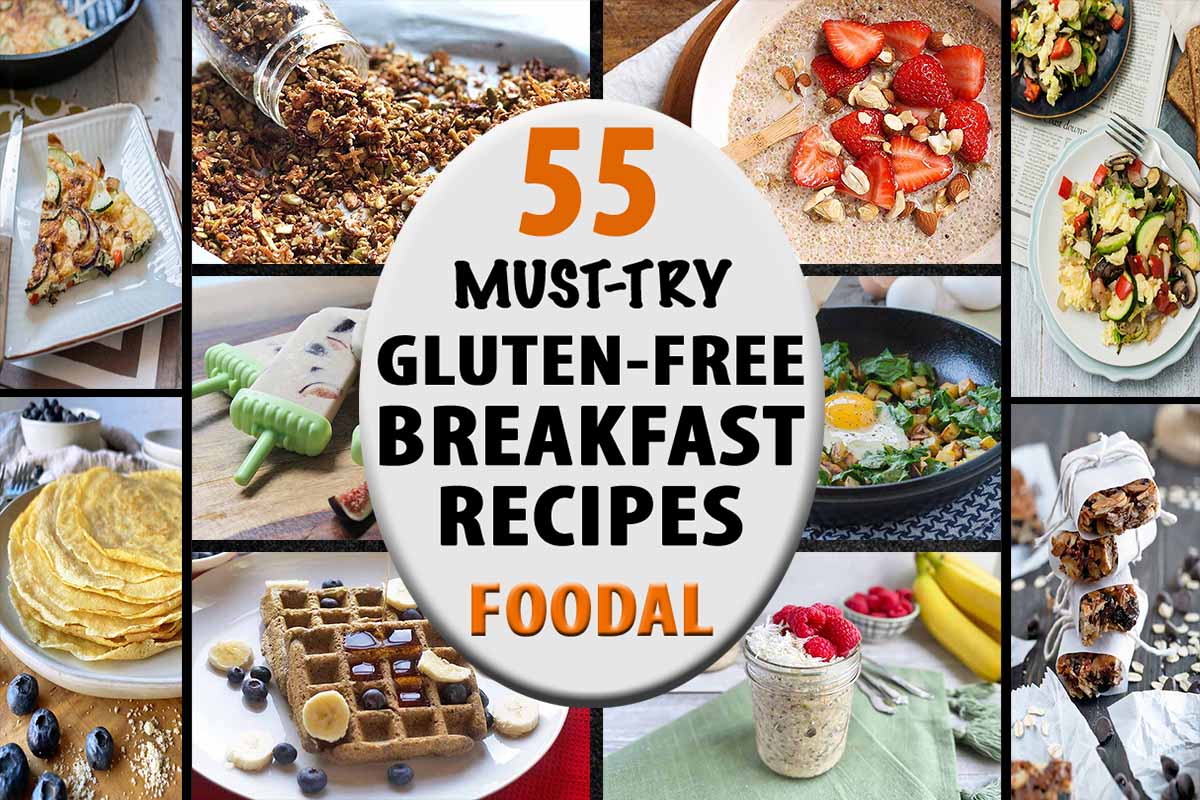
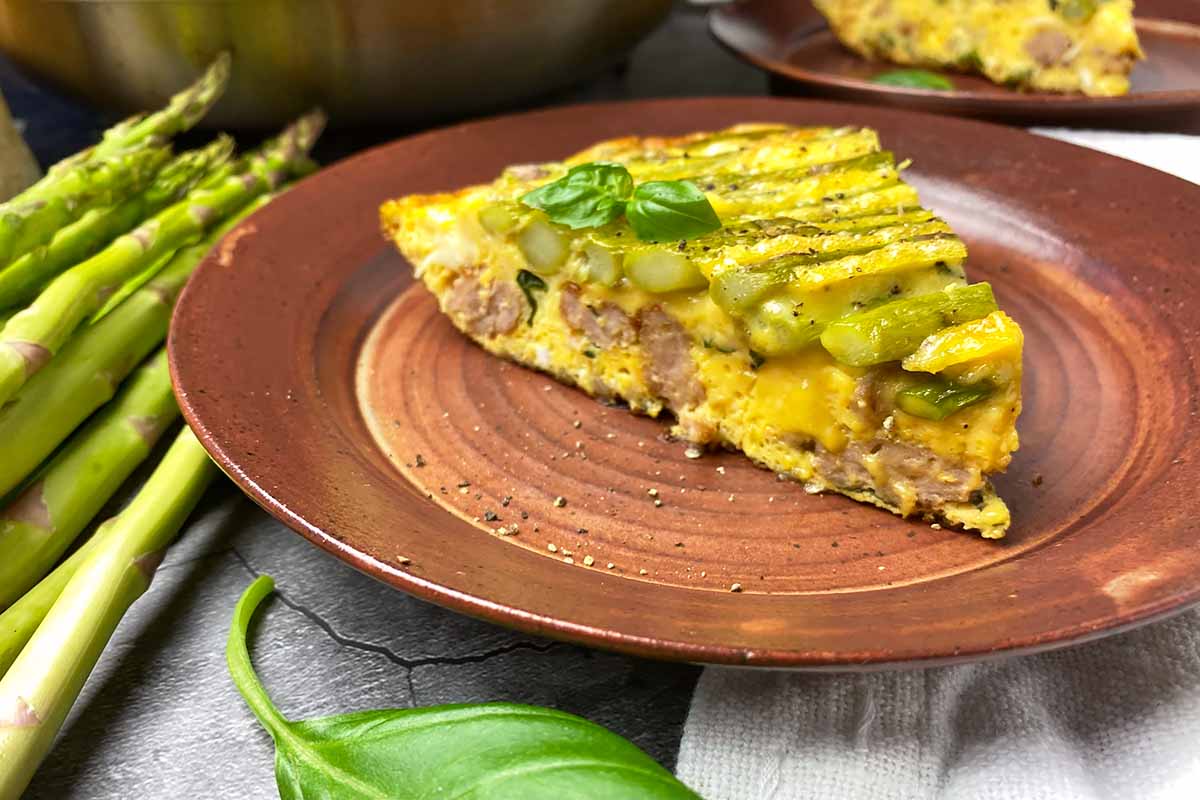
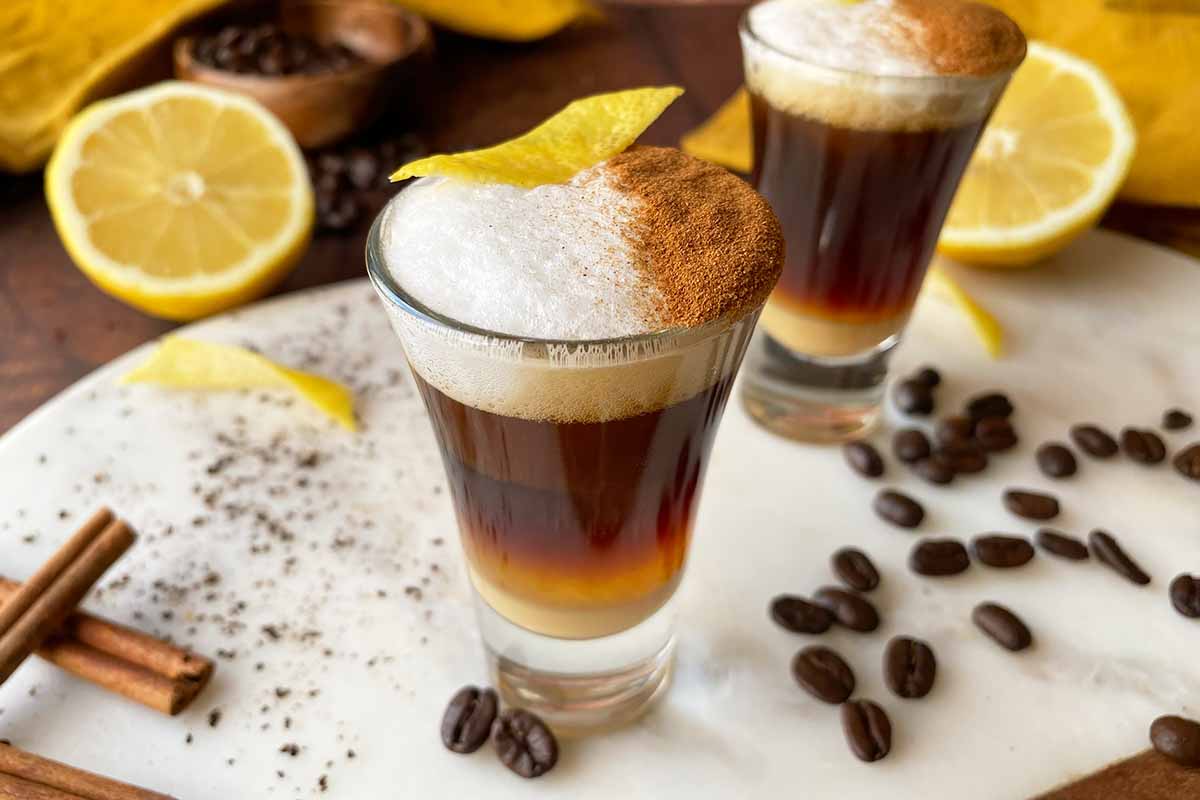
Thank you for this recipe. I bought a bag of coconut flour last week to make bread. Six pastured eggs, a stick of grass-fed butter, and 3/4 cup of coconut flour later, the bread didn’t rise and tasted terrible, so into the chicken run it went, which was very disappointing. I have a bunch of coconut flour left and I’m loathe to waste any more ingredients. This recipe looks very doable, though. So thank you. I haven’t had pancakes in almost a year!
Also, I love everything about your blog. No complaints in any direction.
Thanks again for all your wonderful stories and recipes here!
Thanks for writing. I love reading your blog. And I definitely want to try this recipe! 🙂 Thanks for the inspiration.
Gorgeous pancakes! Ha and I do own well more than 5 kinds of flours in my pantry, though I have to say coconut flour is not one of them! If I ever see it though, I will pick it up and try these!
I had never heard of coconut flour before I read your blog, but your pancakes look so good, I had to try this. I just purchased a bag of coconut flour. Can’t wait!
Add me to the list of recipe testers!
I don’t have coconut flour in my pantry at this moment. I do love, however, any new recipe for pancakes. Love. Love. Love. I’m off the carbs for a bit here (under the doctor’s orders) during my pregnancy, but I’m marking this for my triumphant return! xo
redmenace, coconut flour is low-carb – high in protein, fat, and fiber. So cook away. 🙂
Thanks for including the occasional gluten-free recipe – this celiac appreciates the inclusiveness! And those pancakes look amazing. And for the record, I probably have a dozen different flours in my pantry – an overflowing box of little half-filled bags, often more than one of the same variety open at the same time because I lose track of that whole mess. My new favorite flour – gluten-free oat flour – adds a lovely texture to baked goods.
Thank you for this recipe! I love coconut flour too and cannot wait to make these!
i love coconut flour! this past spring i used it for the first time and i can’t wait to make something else with it. . . VOILA. . . i think i will have to whip up these coconut flour pancakes one of these weekends!
Wow, these taste just a good as what I remember regular wheat flour pancakes tasting like. This is definitely going in my collection!
★★★★★
That’s awesome Molly! Thanks for sharing and I’m so glad you’re loving the recipe.
This sounds so delicious. But due to dietary restrictions my son is not able to tolerate much oil …can I substitute applesauce in this recipe for the oil?
We haven’t tested this option, but please give it a try and let us know how it turns out! Applesauce works well as a substitute for oil in many recipes, particularly those that have a cake-like consistency. Because you’re working with coconut flour, you may need to add a little extra water as well, and be sure to let it hydrate fully before cooking the batter. See our article on oil substitutes for more tips.